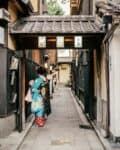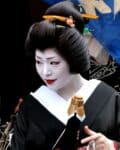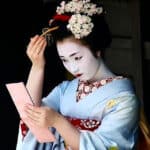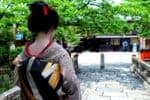Geisha are female Japanese entertainers known for performing traditional Japanese art forms including dancing and singing. If you’ve ever seen a geisha on film, or in real life, they’re bound to stick in your memory because of their striking and unique style.
Most people wonder, are geishas Chinese? Yes, geishas are originally Chinese. Geisha, while they are known in Japan today as well, originated from the courts of Imperial China where women were taught to be graceful and charming companions for high-ranking officials.
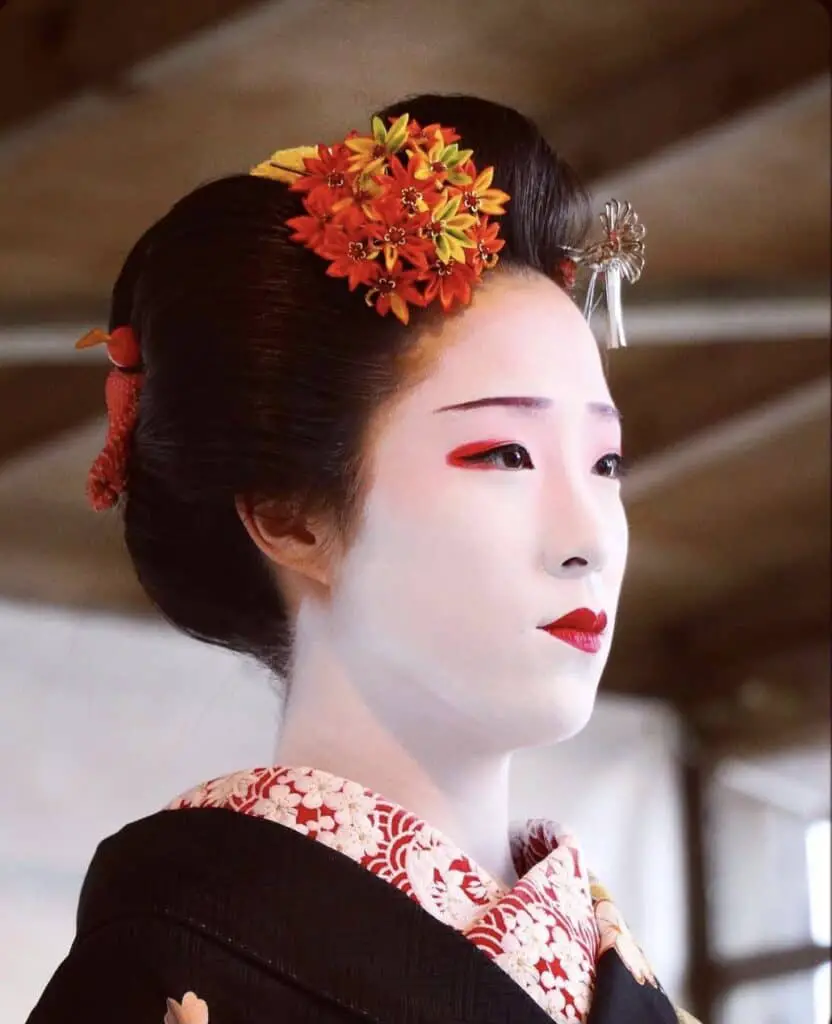

Geishas have been around for centuries and the fascinating culture that surrounds them has existed for that long as well.
Are Geishas Chinese?
The Chinese courtesan culture has a long and illustrious history. Geisha, while they are known in Japan today as well, originated from the courts of Imperial China where women were taught to be graceful and charming companions for high-ranking officials.
However, the quiet and reserved Japanese geisha is a stark contrast to the loud, boisterous courtesans of China.
Japanese Geishas are often described as having an air or mask that conceals their true feelings; they would never act in such brazen ways like socializing with clients outside of work hours.
The Chinese Courtesan culture was built on strong family ties but lacked any formal training which led them down many paths including becoming concubines for wealthy men who could afford it.
This tradition continues today albeit at much lower rates due to economic difficulties faced by these women’s families.
Although now we have electricity and light bulbs, geishas uphold these ancient traditions. If you want to know more about this fascinating culture keep reading.
Check out my guide if you want to Transform Into a Traditional Geisha at Home.
Why Does Geisha Makeup Differ Between People?
There is a difference in makeup styles that varies between maiko (an apprentice geisha), young geisha, and older geisha. The use of oshiroi can also vary according to the geisha’s status, occasion, and region of Japan.
A geisha’s makeup consists of the oshiroi (white foundation) with red and black eye makeup, red and black eyebrow makeup, red lips, and a light pink blusher. Usually, geishas and maiko will under paint their lips using red lipstick. This is also known as beni.
So, why do Geisha paint their face white? The reason Geisha paint their face white dates back to ancient times when there was no electricity. As candlelight is not very bright geishas painted their face white to make themselves more visible and recognizable.
This white foundation is known as oshiroi and is worn by geishas and their apprentices called maiko.
However, it differs slightly for first-year apprentice geisha. Instead of painting the top lip and the bottom lip, only the bottom is done. It is also expected that a new maiko would wear less black around her eyes and eyebrows than compared to a senior maiko.
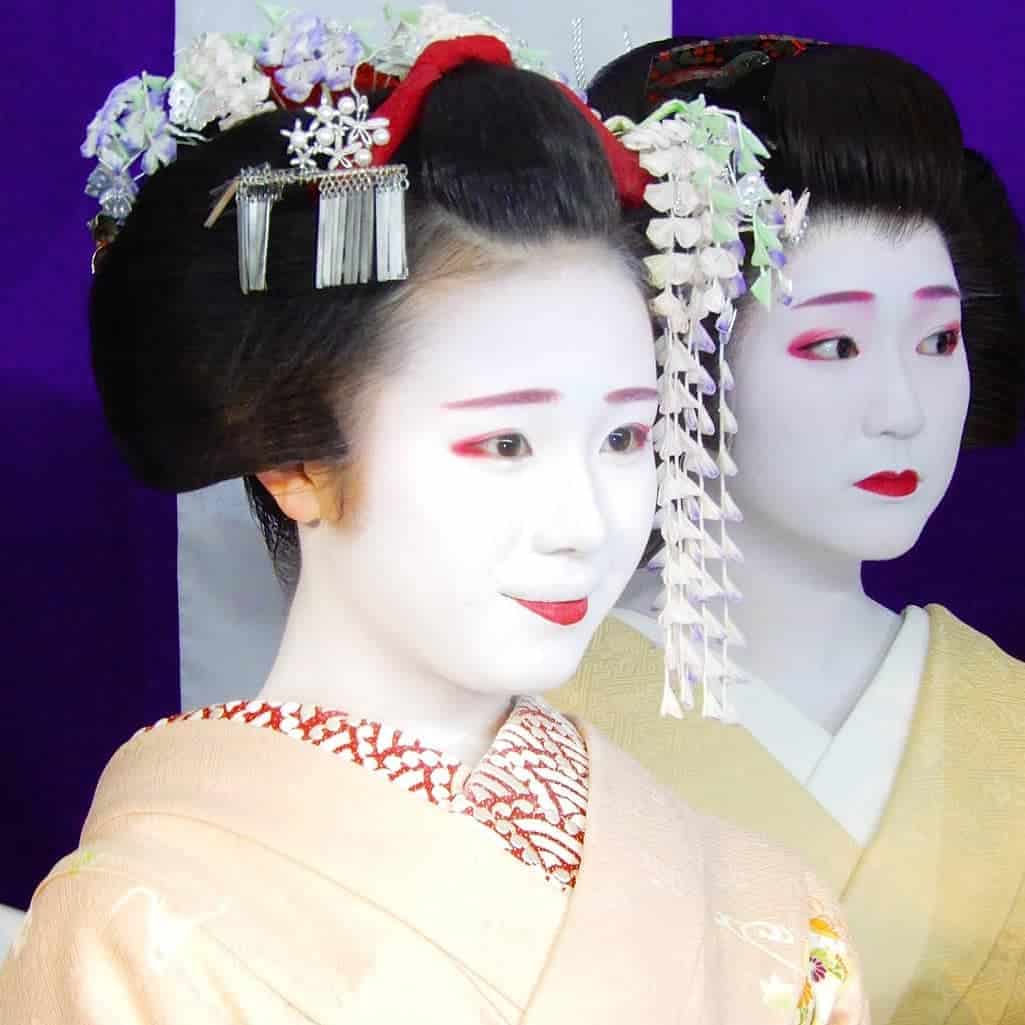
In order to give off a youthful appearance, young apprentices are known to sometimes paint their eyebrows a bit shorter or rounder. This helps to emphasize their youthfulness.
Maiko wear a lot more blush than geisha do. The pink blush is applied to maiko’s cheeks. Inexperienced maiko may have the help from their house mother, known as oka-san, or her older sister help with applying her makeup.
A maiko’s older sister is the term used for a geisha mentor. Someone who guides them as they train to become a geisha. In some geisha districts, it is required that for a short period prior to becoming a geisha, the maiko must color their teeth black.
Another way to show inexperience in some regions is by having maiko only wear oshiroi and blusher. This typically occurs right at the beginning of an apprenticeship. Eventually adding on black and red eyeliner to maiko as they gain experiences.
There are regional differences to be expected as well. With some geisha districts tending to favor a light application of oshiroi. Whereas in other regions a thicker application will be applied. This is dictated by the style according to the district, but also the preferences of the house mother.
Senior geishas can start to strip back on their makeup application. They will stop wearing any blusher at all and how often they wear oshiroi will change as well. They will apply oshiroi for special occasions and stage performances.
What Are the Stages of Training for Geisha?
A woman who wants to train as a geisha can do so by securing an apprenticeship at an okiya. This is the house that geisha can live in and is run by the house mother. The house mother is a senior geisha, or a retired one and they teach younger geisha.
It used to be that geisha would start their training at a very young age, this would be around six years old. However, this practice changed in the twentieth century and now geishas start their journey as maiko around 17 or 18.
There was a change in labor laws that states apprentices cannot join an okiya until they are aged 18. The rules differ slightly for geisha in Kyoto, where okiya can legally take on apprentices between the ages of 15 and 17.
Because of these changes, it means that it is the women’s choice to train as a geisha. Doing so when the time is right for them. Girls must have graduated from middle school, but women can start their careers after college, or into adulthood.
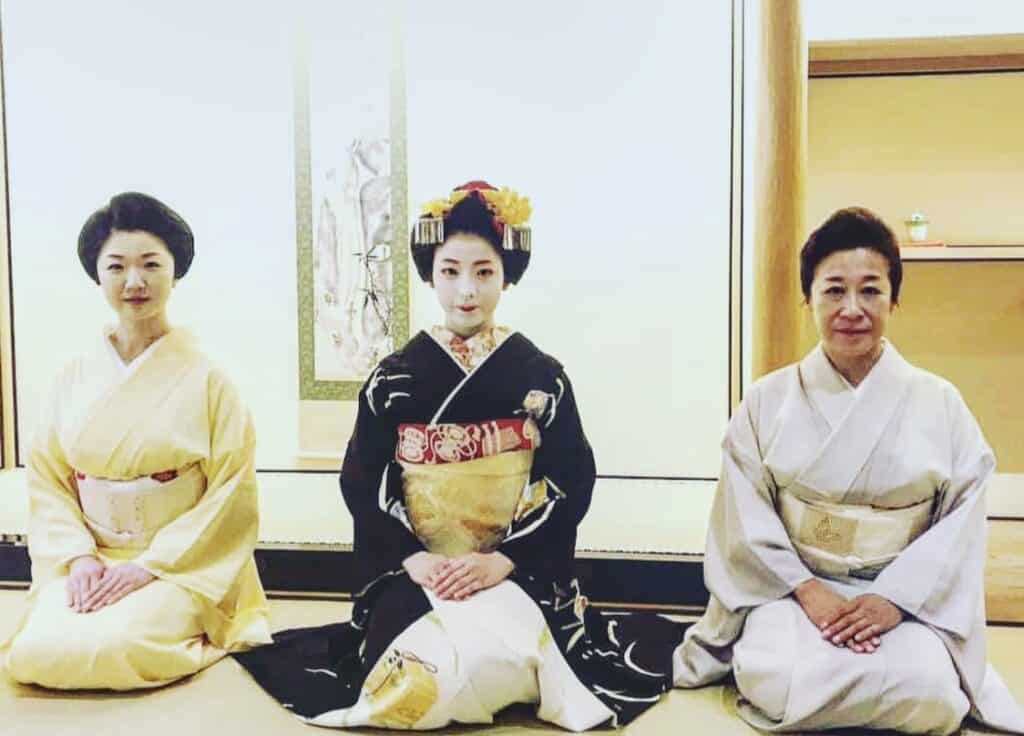
Even before debuting as a maiko, apprentices will live at the okiya as a shikomi. Which is basically a trainee, at this stage in the journey the young woman is there to learn. The shikomi are taught by their house mother and observe other geishas at okiya.
They attend to the needs of the house and need to learn how to live with their geisha sisters. This is where they have the opportunity to learn the skills required of a maiko.
A girl will be a shikomi for up to a year at which point they can be taken on as an apprentice and become a maiko. Traditionally this stage lasted a much longer time, particularly for children that were bonded to an okiya.
As a girl becomes a maiko and is bonded to the house, that means she is under contract. Training is very expensive and there are different ways this can be covered.
The okiya can loan everything to the maiko, food, a room, her kimono, the tools she needs. However, this all needs to be repaid, which means that her wages will go to the house until the debt is cleared. There are also options to pay for it yourself or get it a loan.
With the start of formal training, the maiko will begin as a minari at a geisha party known as ozashiki. The role of a minari is just to observe how other geishas interact with customers. They are meant to participate in the party, but rather to sit quietly and learn.
After about a month as a minari, the maiko will be ready to debut. In an official ceremony, the maiko will be bonded to a geisha that will be known as her older sister. The older sister’s role is to take on the primary teaching role.
This stage lasts from 3 to 5 years and is where the maiko will learn about working in the karyūkai. Training will include serving drinks, holding a conversation, and some artistic training.
There are specialist music and dance teachers that will contribute to the maikos training. Maiko will also be expected to learn from more senior maiko.
The maikos training is broken down into 3 different elements:
Arts
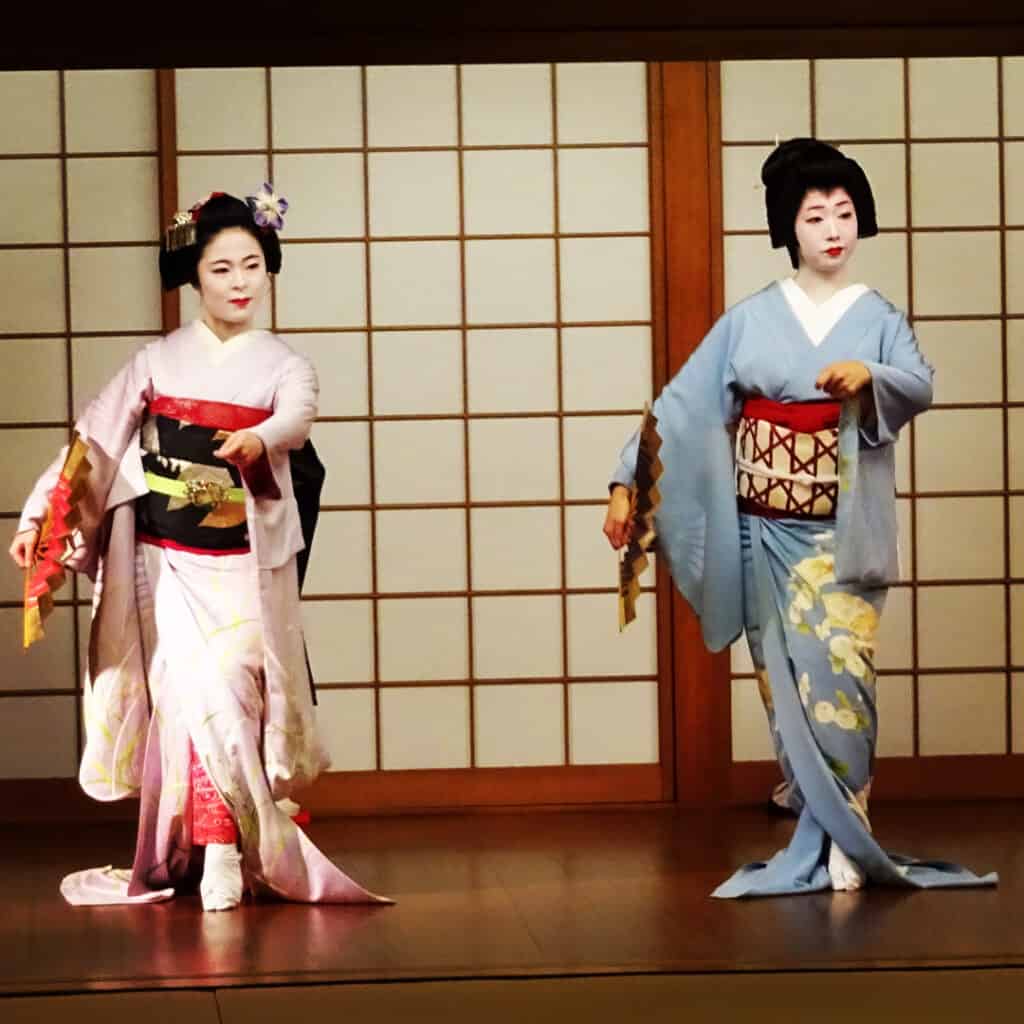
Maiko will be expected to learn a variety of different things. Including traditional Japanese dancing – the nihonbuyō style, instruments like the flute and the drums, traditional songs, poetry, games, and calligraphy. These are taught by specialists, but supplementary learning is given by the maiko’s older sister.
Entertainment
The entertainment element is best learned by observing the older sister. A maiko would observe her older sister at tea houses and also parties at the karyūkai. Watching how her older sister interacts with the guests.
Social Skills
A very important part of geisha training is learning how to navigate the complex social requirements of the hanamachi. Hanamachi is the term meaning the geisha district. Each district has different rules and expectations.
After spending a few years as a maiko, the woman will graduate and obtain geisha status in a ceremony called erikae. After graduating there is no more formal training, however, a geisha is expected to top up her training and refresh.
Geishas are known for working well into old age. It is not uncommon to see a geisha in her nineties. Some do retire at which point they will take on the house mother role, or as a specialist teacher.
What Does A Geisha Do?
A geisha’s role is to entertain guests who are attending a meal or some other occasions. With their training, they are there to make the guests feel comfortable, participate in conversation, play games, and perform.
Overall a geisha is a wonderful accompaniment for an evening’s entertainment. Not only do they help to keep your glass filled, they add a lot of pep to the evening.
Guests and geishas will engage in plenty of different games, where usually the loser has to down their drink. They will spend time with guests and are well versed in casual conversation, able to make people feel at ease.
The highlight of the evening will usually be a traditional dance performance. Accompanied by music performed by another geisha on the traditional instrument the shamisen.
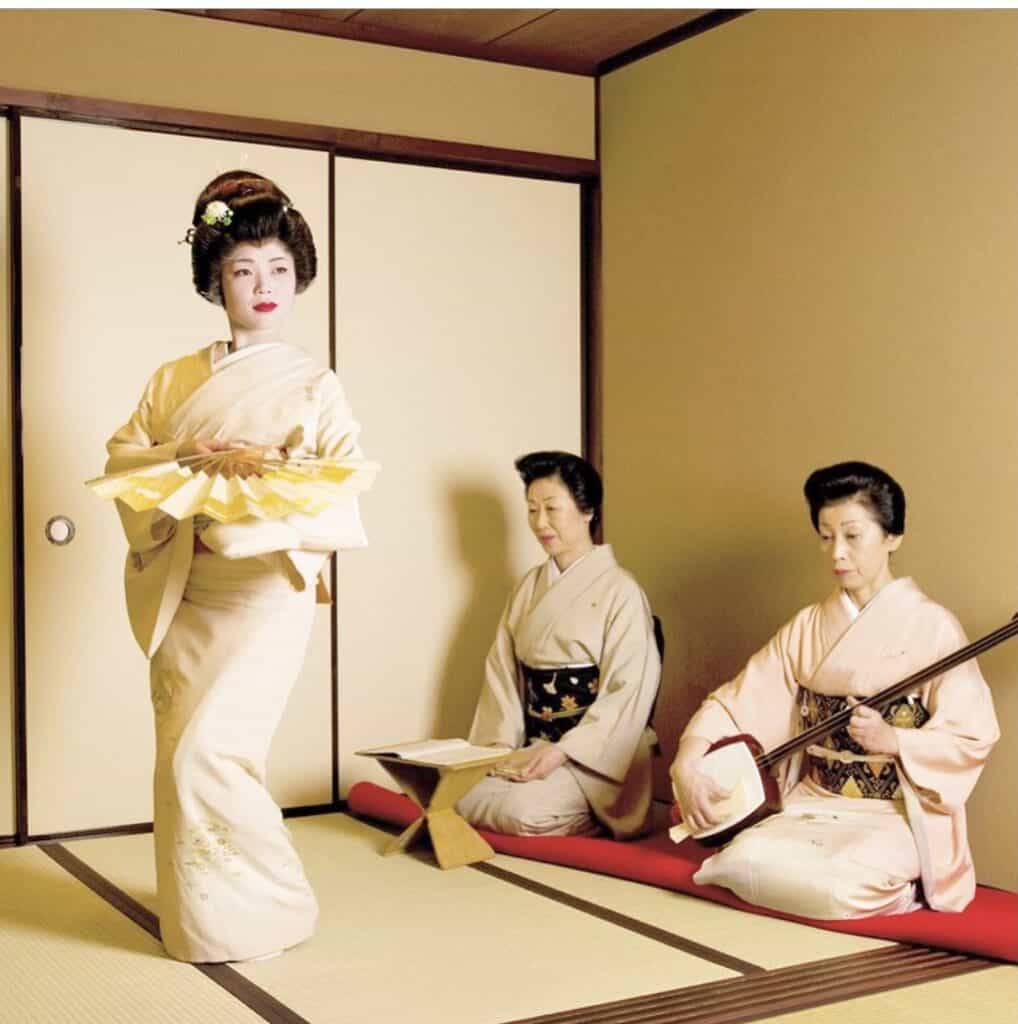
Ochaya, the tea houses that geishas work at, are highly exclusive and quite expensive too. They are very different from normal restaurants as guests aren’t billed at the end of the evening. Nor are they billed at the start.
They work on a tab basis, based on trust. The whole evening is tallied up, which includes the geisha, the food, and the room hire and the customer will be billed once a month. Unfortunately, it’s not easy to sign up as a new customer.
Since trust is key here, someone can only become a new customer of an ochaya if they are guaranteed by an existing customer. So, what does that mean for a regular tourist visiting Japan?
Well, things have changed since the economic stagnation in Japan. Geisha parties were not immune to this and this is a luxury; ochaya has suffered.
Tourism has boomed in Japan as people have learned more about Japanese cultures. Something many tourists might want to do is experience a geisha party. If the foreign customer has the right budget, then this can be arranged.
Travel agencies and hotels can help to arrange the experience for wealthy travelers. However, you will likely need to employ the help of a translator. Geishas may not know English, but they are also supposed to talk in the Kyoto dialect.
How Can You Become A Geisha?
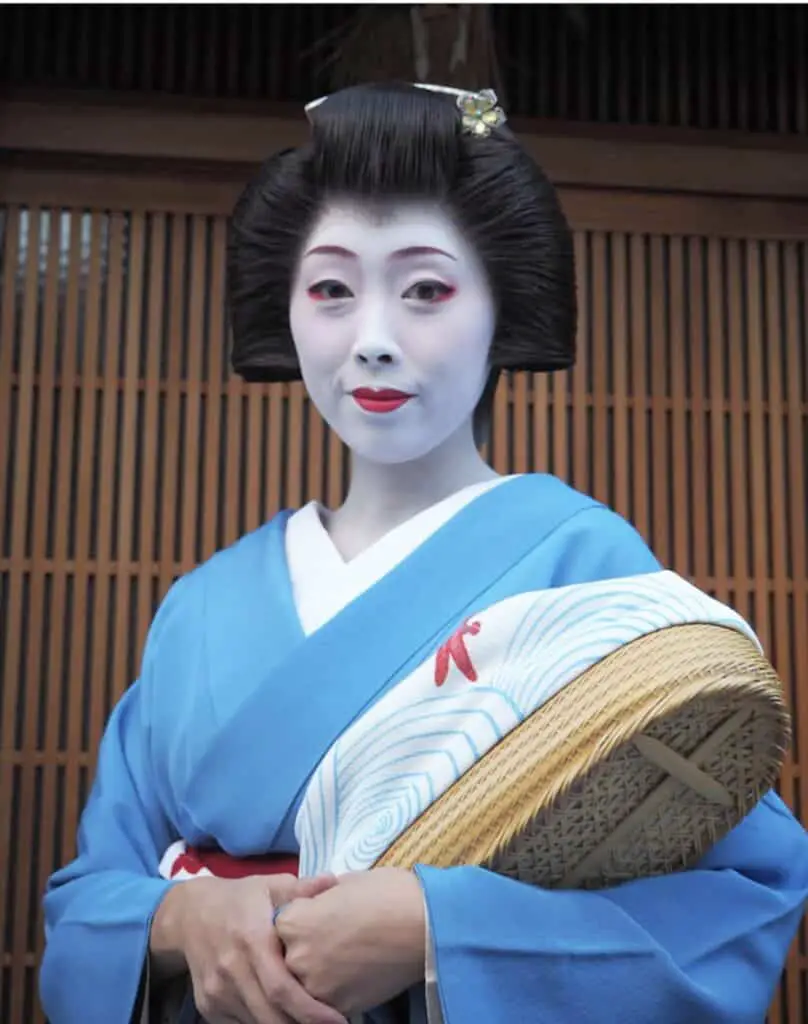
Perhaps you’ve seen Memoirs of a Geisha, which let us see behind the curtain. Or perhaps you’re just inspired to by reading this right now. Either way, if the idea takes your fancy you can do it!
Well, you can do it for a day. If you take a trip to Kyoto, the beating heart of geisha culture. You will find geishas and maiko in the Gion district. However, it’s not easy to meet a geisha.
Visitors to the area may be able to spot one as she walks to her appointment. But if you do, be courteous, don’t take pictures of geisha, and don’t bother them. They are human beings, and this is just their job.
They did not ask for their culture to be romanticized by western societies. So do remember to be polite, they’re just doing their job.
However, something new that has been popping up in Kyoto are these geisha makeover shops. While there are plenty of places where you can rent or buy a kimono, there are providers that will give you a more authentic experience.
These shops will give you a geisha makeover from top to bottom. They will apply oshiroi, blusher, lipstick, do your hair and provide you with a kimono for a photoshoot.
While you probably won’t meet a geisha during this experience you will look like the real deal. If you are looking for the true authentic situation and are asking can foreigners become geisha? Well, it seems like they can, although it is very rare.
There’s absolutely no rule that says someone of foreign descent can’t become a geisha. Though, there aren’t many people that can say they are geishas that aren’t Japanese.
The real barrier to entry for foreigners is that you need to speak fluent Japanese, in particular the Kyoto dialect. Japanese is considered the hardest language to learn for native English speakers by the U.S State Department.
To master Japanese, it is believed to take 88 weeks or more. That’s almost two years of intense language learning before you can even think about an apprenticeship.
Who is taken on as an apprentice is down to the okiya’s house mother. But there are examples of this happening in the real world. Dr. Liza Dalby was invited to join a house while studying for her Ph.D.
Dr. Dalby was already fluent in Japanese and could play the traditional instrument shamisen. She attended banquets under the name Ichigiku, but she did not charge a fee. She is considered an expert in the Japanese geisha community.
Another foreigner that was allowed to train as a geisha is Fiona Graham, an Australian anthropologist. She was the first non-japanese woman to become a geisha. While filming a documentary for the National Geographic Channel she completed her training.
After, she was given permission to work full-time as a geisha which she still does to this day. She trained in the Asakusa geisha district in Tokyo, the documentary, however, was never finished.
Fiona Graham applied to take over the okiya from her house mother who had taken ill. She was denied this request on the grounds of her being a foreigner. Since then she has opened her own okiya in the Fukagawa district and has taken on 4 apprenticeships.
Are Geishas Respected?
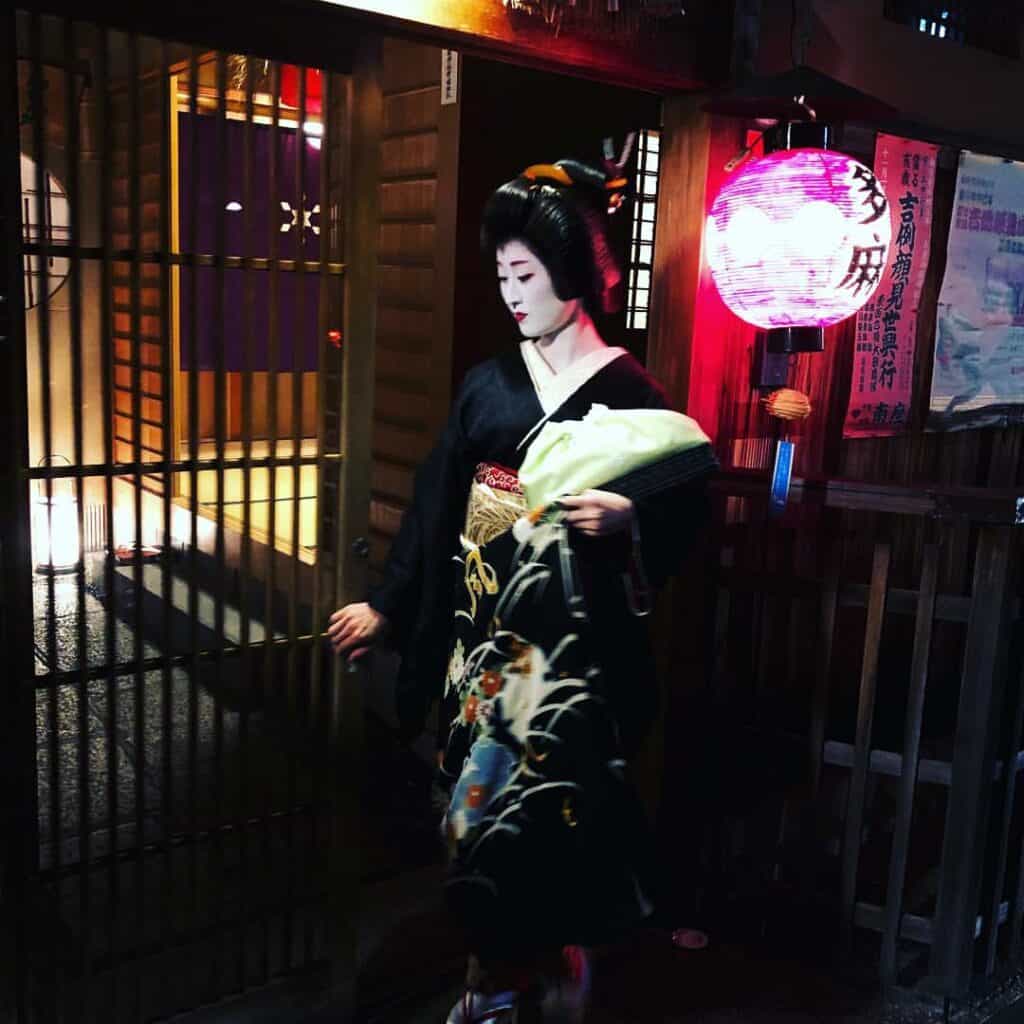
Geisha culture dates back to the 17th century, it is an old culture that is built on Japanese traditions. Within Japan geishas are well respected, it is a sought-after job and it’s very hard to become one.
There is a misconception amongst western countries that geishas are prostitutes, which they are not. They are highly skilled, professional entertainers.
It has since been outlawed, but mizuage used to be a ceremony that would take place for some maiko. This would serve as part of their coming of age ceremony and graduation. Maiko who underwent mizuage would have their virginity sold for large sums of money that would be kept by the okiya.
Nowadays, their graduation ceremony is called erikae and it is completely non-sexual. There is no such thing as mizuage among modern geisha culture. They should not be confused with oiran, Japanese courtesans.
Geishas are meant to be single, so they do not marry. If they should choose to marry, they will retire from being a geisha. Many maiko do not make it to the end of their training period, but it is also not uncommon for geishas to retire in their 30s or 40s and become housewives.
Geishas are expected to be married to the art, not to a man. That is why they have to quit if they choose married life. Usually, that means they can’t change their mind once they quit.
One workaround would be to start from the beginning in a new city under a new name. Of course, geishas could have secret boyfriends, but they live under very strict rules and live alone so it’s easy to get caught.
Many girls become geishas because they adore the elegant world of the geisha. It’s a great adventure to embark on as a young woman, with lots of skills to be learned. Through documentaries and photos on the internet, many young girls start their journeys as maiko to uphold the traditions of this incredible culture.
